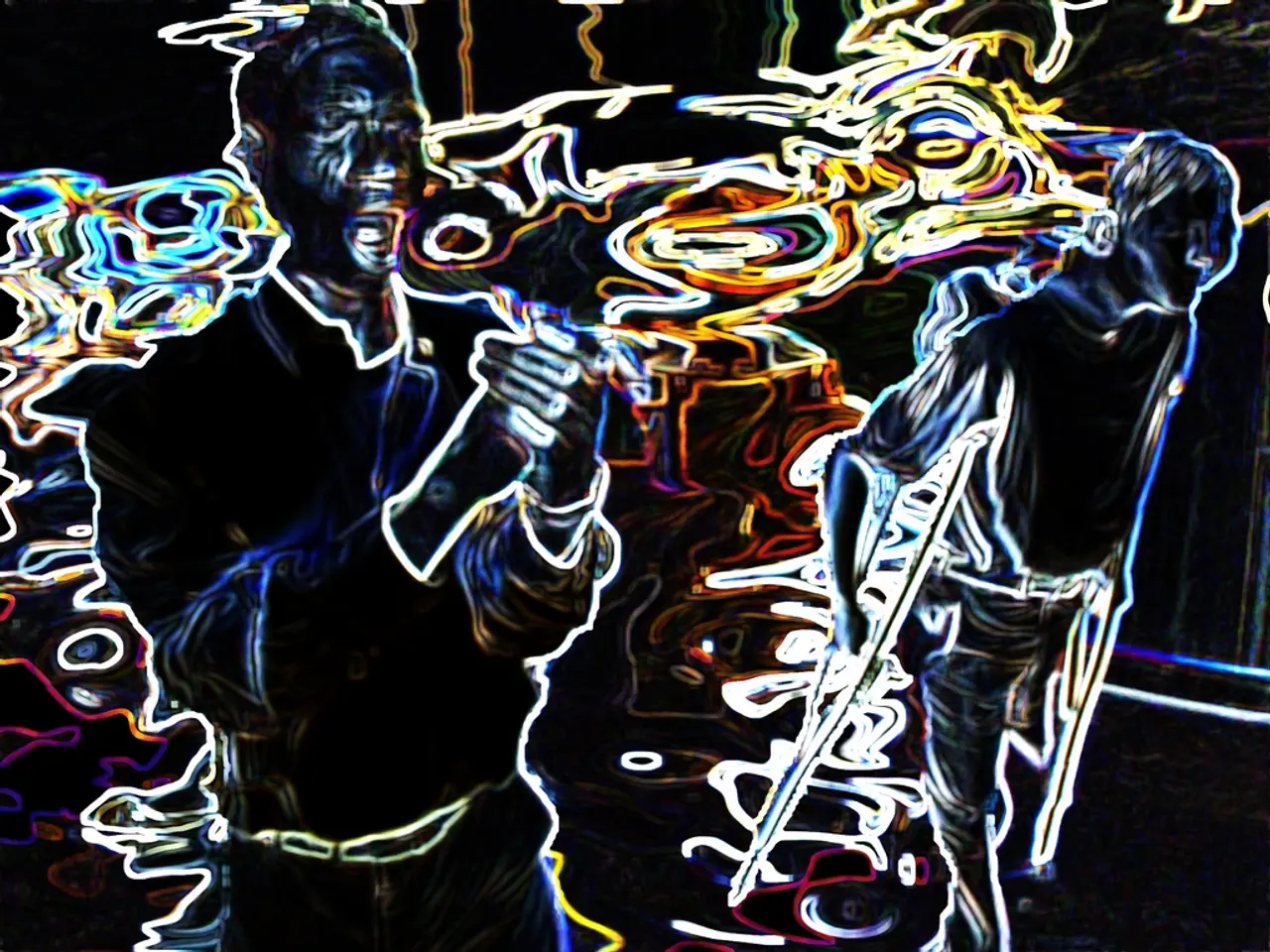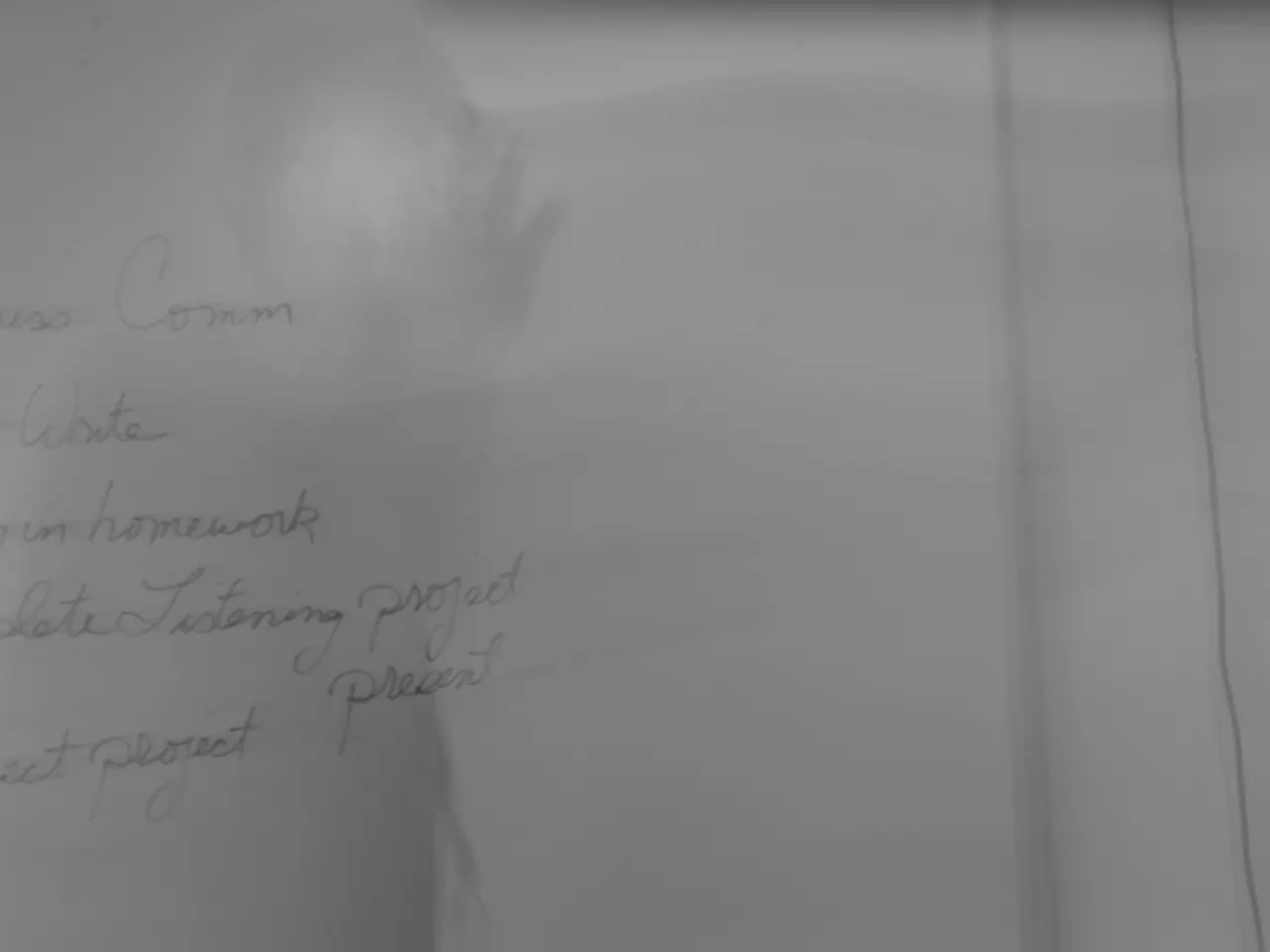Optical Illusion May Trigger Nausea, but It's a Deceptive Appearance in Reality
The Pinna's Illusory Intertwining Effect is a captivating visual optical illusion that has been intriguing viewers since its first publication in the academic journal "Shifts of Edges and Deformations of Patterns" in 2002. This illusion, considered one of the best, was created by researcher Simone Pinna and is named after him.
The illusion presents a simple layout of overlapping circles that, at first glance, seem to weave and intertwine in a complex 3D spiral. However, upon closer inspection, it becomes clear that the circles do not actually overlap but are laid out next to each other in a pattern of slanted rings, much like squares forming rings.
The illusion's deceptive appearance is a result of the brain's attempt to make sense of conflicting visual messages. When viewed, the brain struggles to determine whether the illusion is made of circles or spirals, leading to the involvement of peripheral vision. This confusion causes the brain to perceive the layered elements as a 3D image, even though the illusion is flat.
The Pinna's Illusory Intertwining Effect is a product of the brain's interpretation of ambiguous visual cues, primarily involving contour intersection, grouping, and continuity. The illusion exploits the visual system's tendency to seek coherent wholes, leading to the perception of illusory intertwining.
The illusion's disorienting visual effect is grounded in fundamental principles of visual perception and Gestalt organization, such as Gestalt principles like Good Continuation and Common Fate, where visual elements aligned or moving together are grouped perceptually. Contour interaction mechanisms and figure-ground assignment ambiguities also play a significant role in the illusion's creation.
While the illusion may seem chilling, hypnotic, or even disturbing to some viewers, it is important to note that there are no additional reported side effects of viewing the illusion. However, it is advised to avoid staring at the illusion for too long due to its potential to cause a headache.
For those interested in experiencing the Pinna's Illusory Intertwining Effect, the illusion can be viewed by staring at it and following each circle around from the top to the bottom. A diagram of the illusion's layout can be found below for proof of its simple design. The optical illusion's simple layout belies its complex and disorienting visual effect, making it a fascinating study in the realm of visual perception.
- The Pinna's Illusory Intertwining Effect, a creative 3D optical illusion, defies its simple layout appearance by creating a captivating visual experience.
- The illusion's design, initially seeming like intertwining circles, is based on fundamental principles of visual perception and Gestalt organization.
- To fully experience the illusion's art, viewers are advised to stare at it and follow each circle around from the top to the bottom, as demonstrated in the poster below.
- The illusion's deceptive appearance is a testament to the power of the brain's interpretation of ambiguous visual cues, often found in layout designs.
- The Pinna's Illusory Intertwining Effect, named after its creator Simone Pinna, has been a significant inspiration in the field of visual design, particularly in the areas of UI and UX.
- The illusion's disorienting visual effect reflects the complex interplay of technology and human lifestyle, serving as an entertainment resource that intrigues viewers.
- Despite the illusion's mesmerizing effect, it is crucial to remember to avoid staring at it for extended periods to prevent potential headaches, emphasizing the importance of balance in technology and lifestyle.




